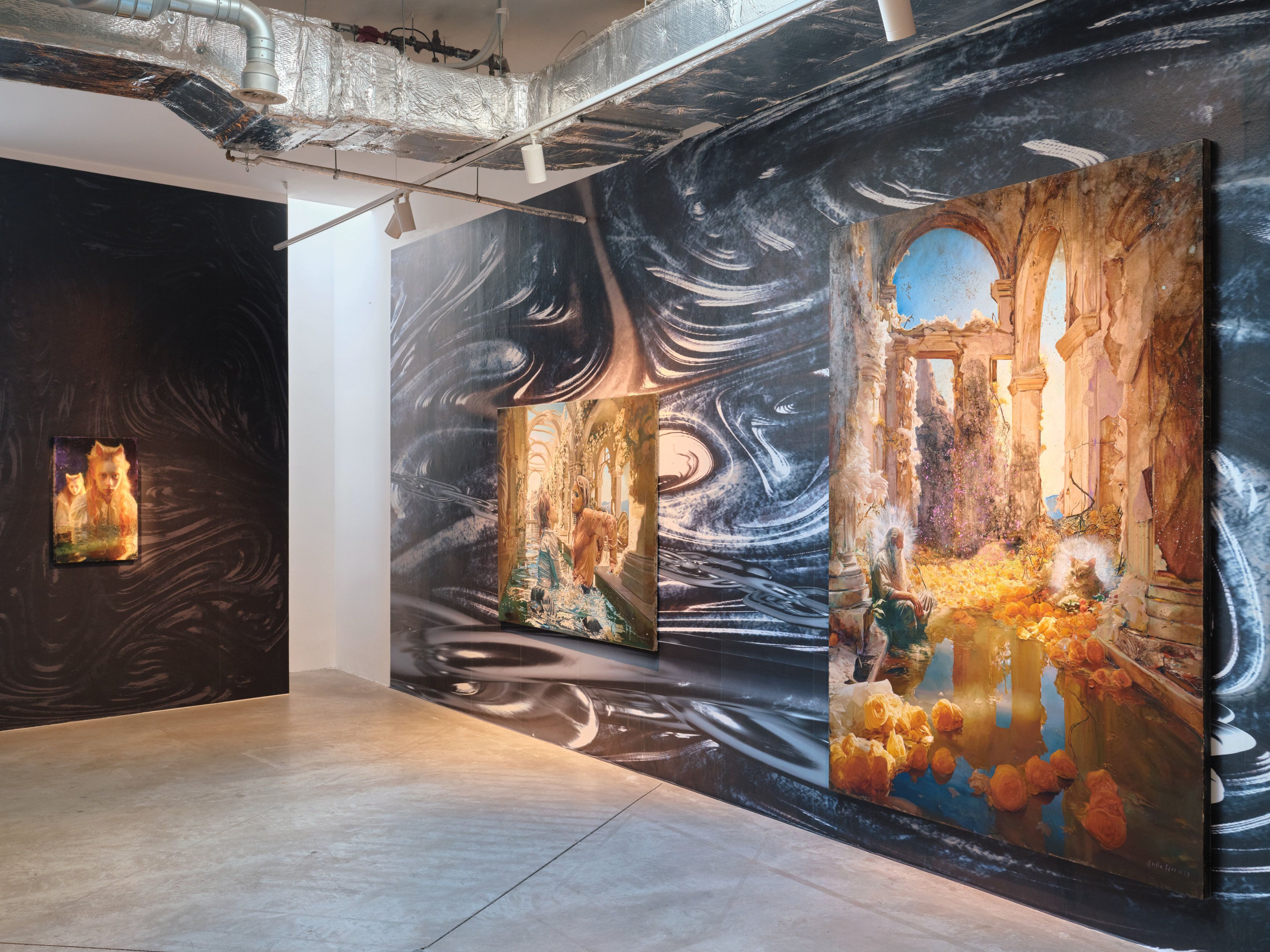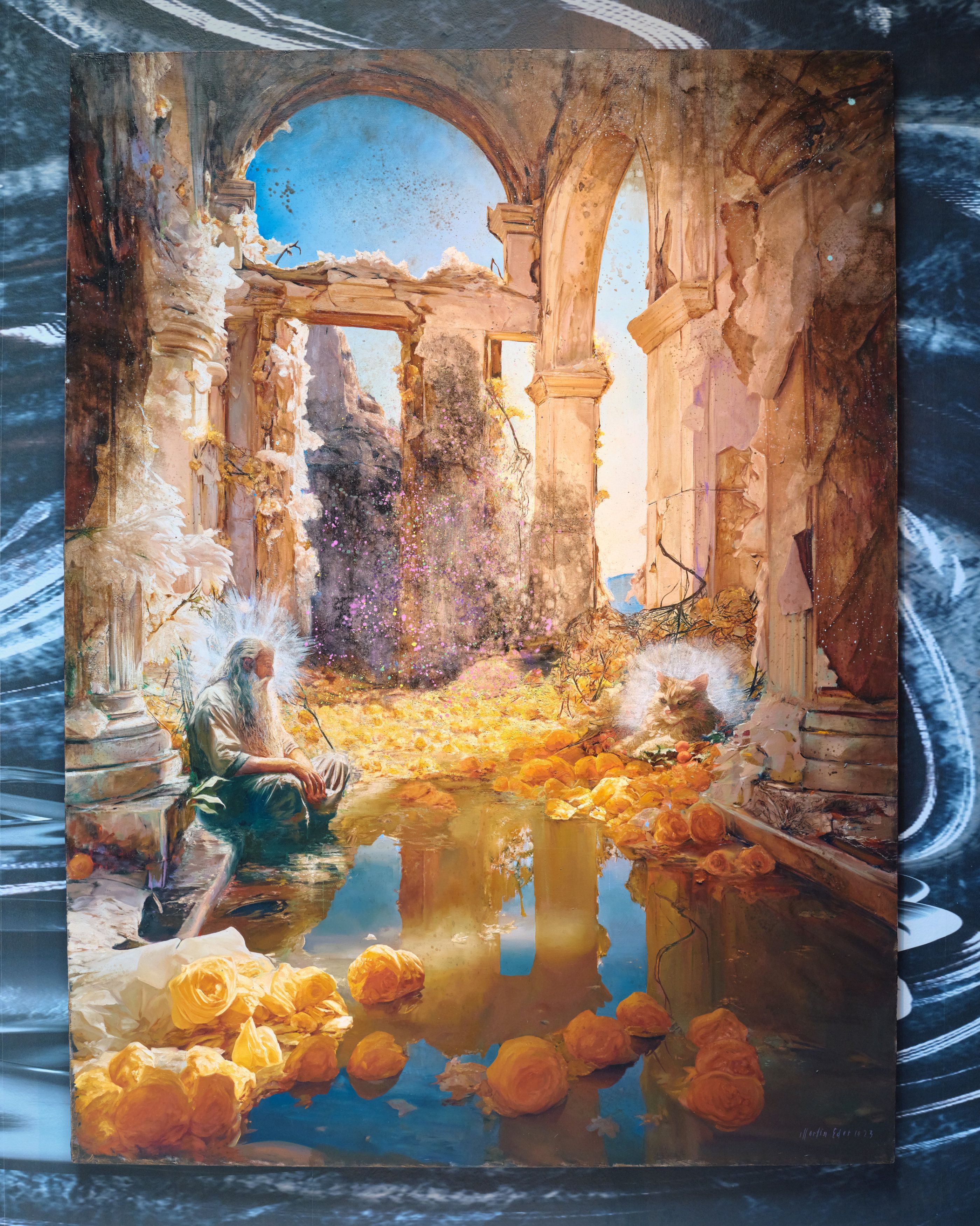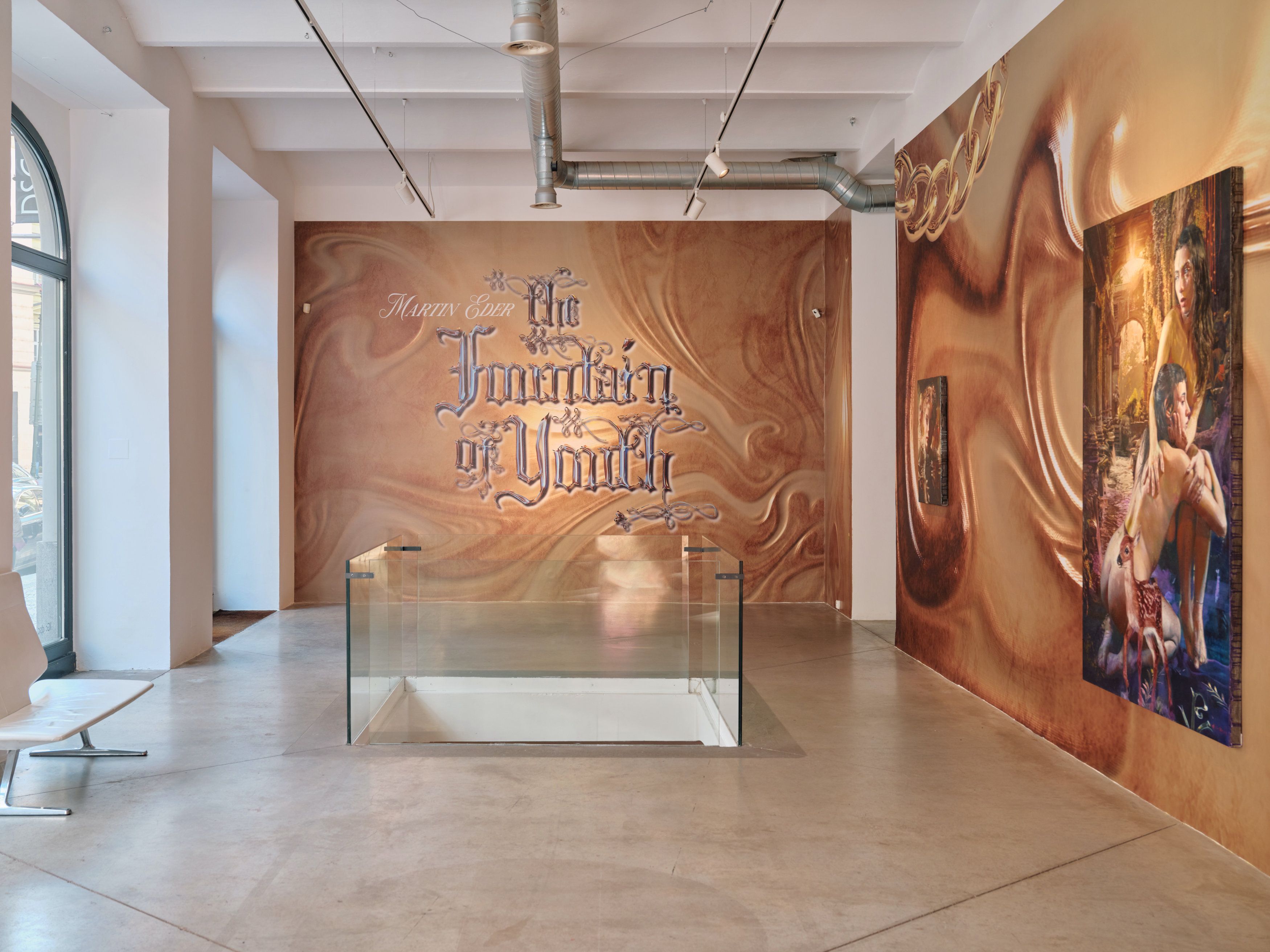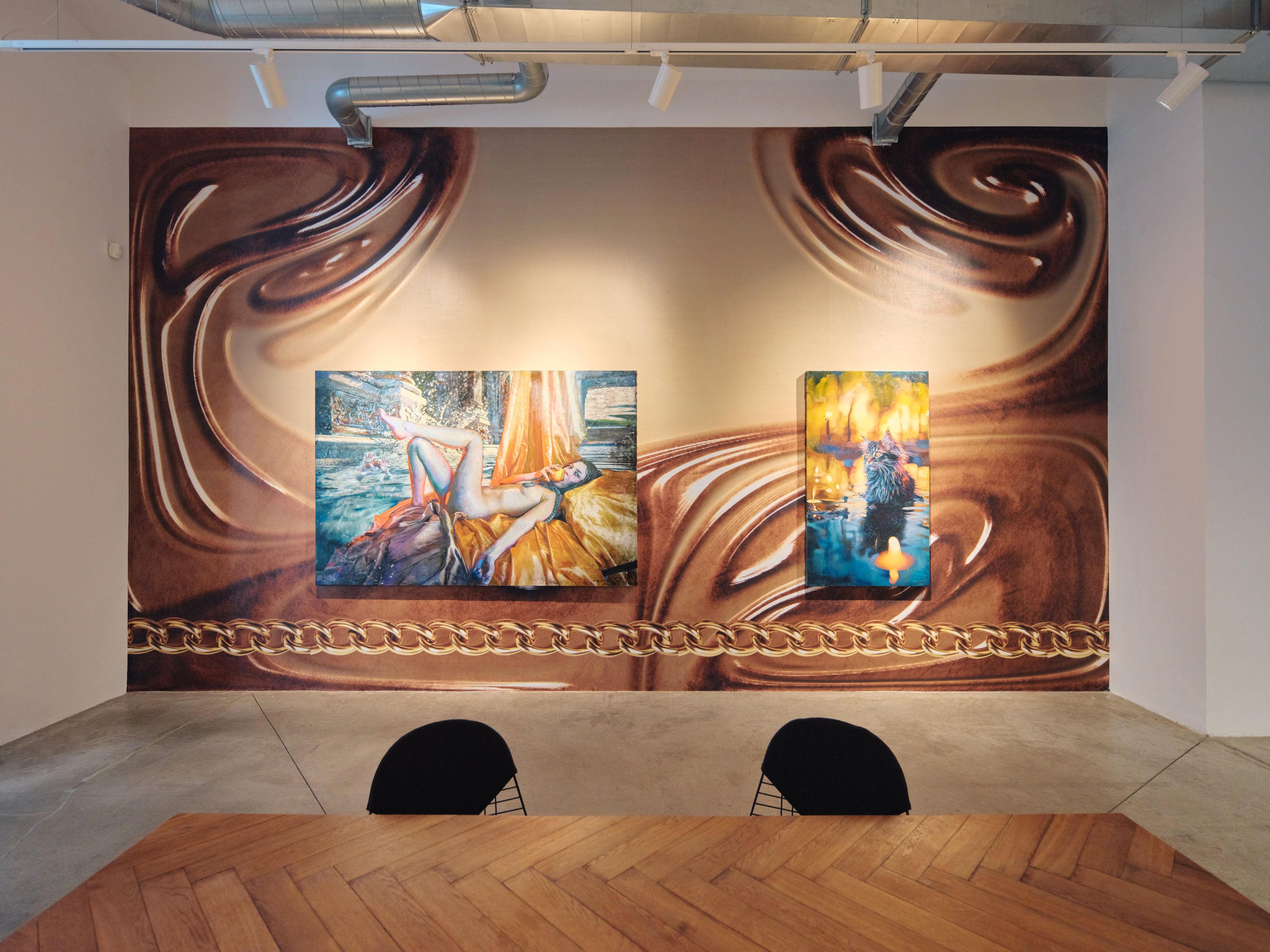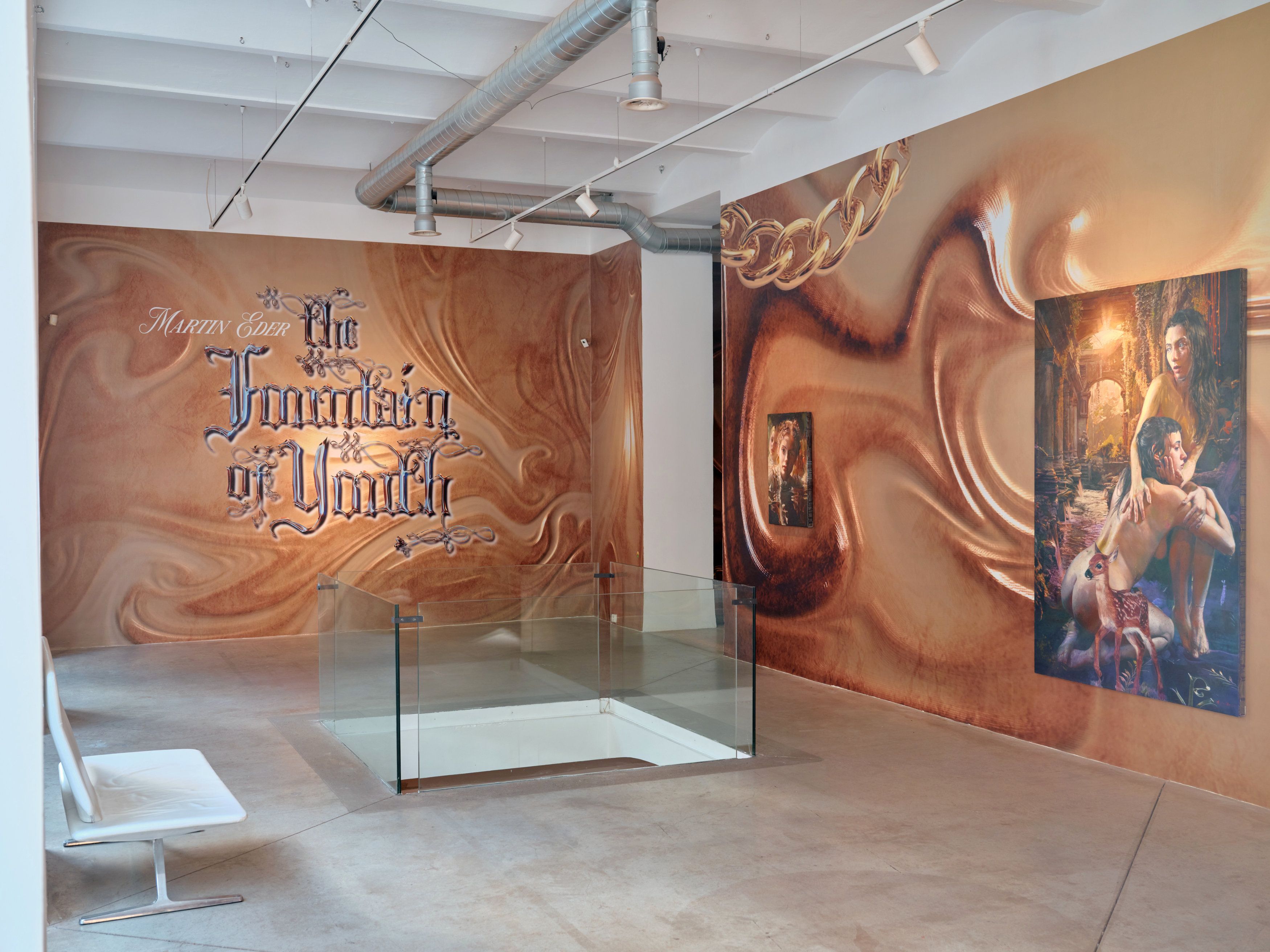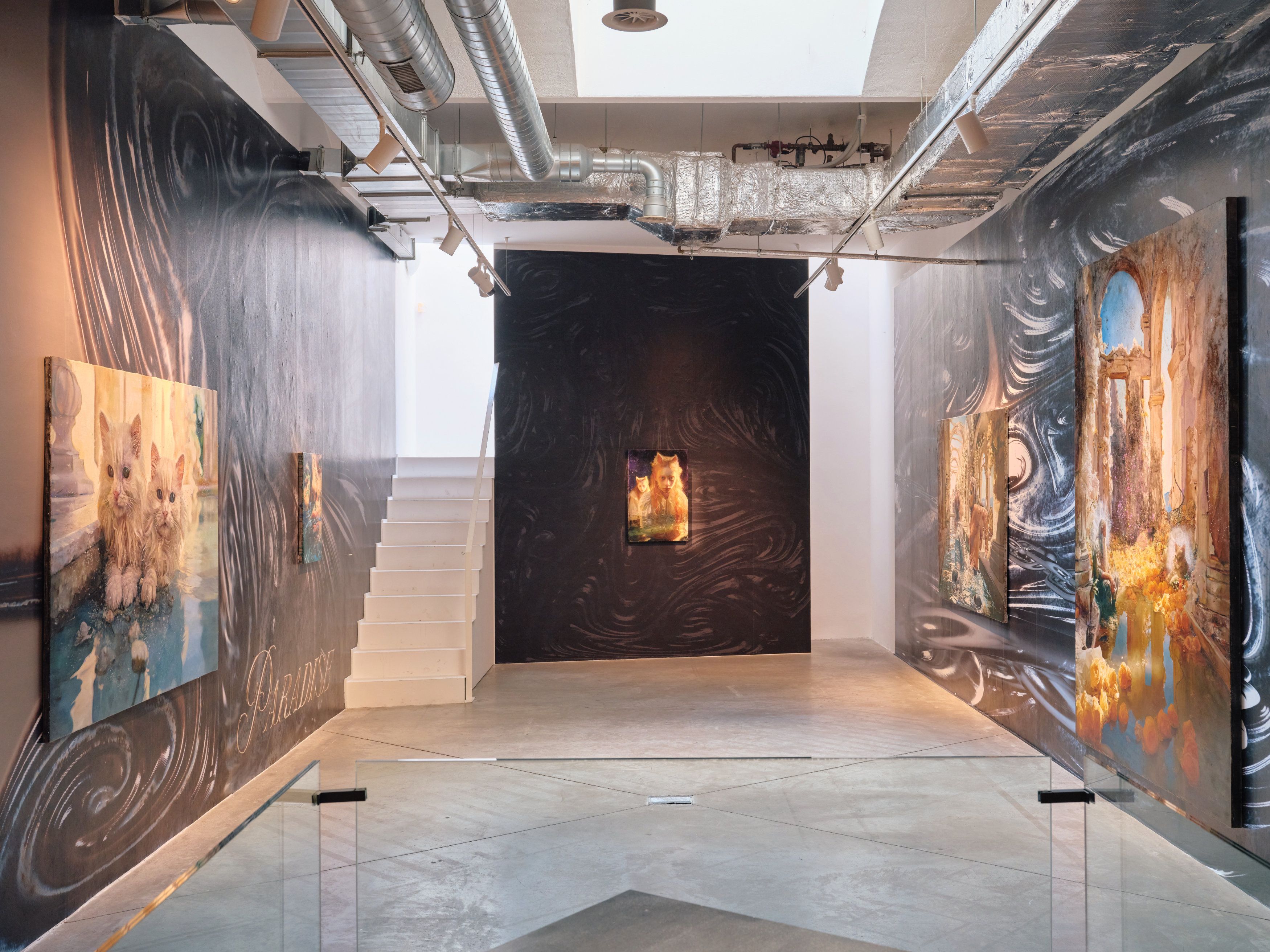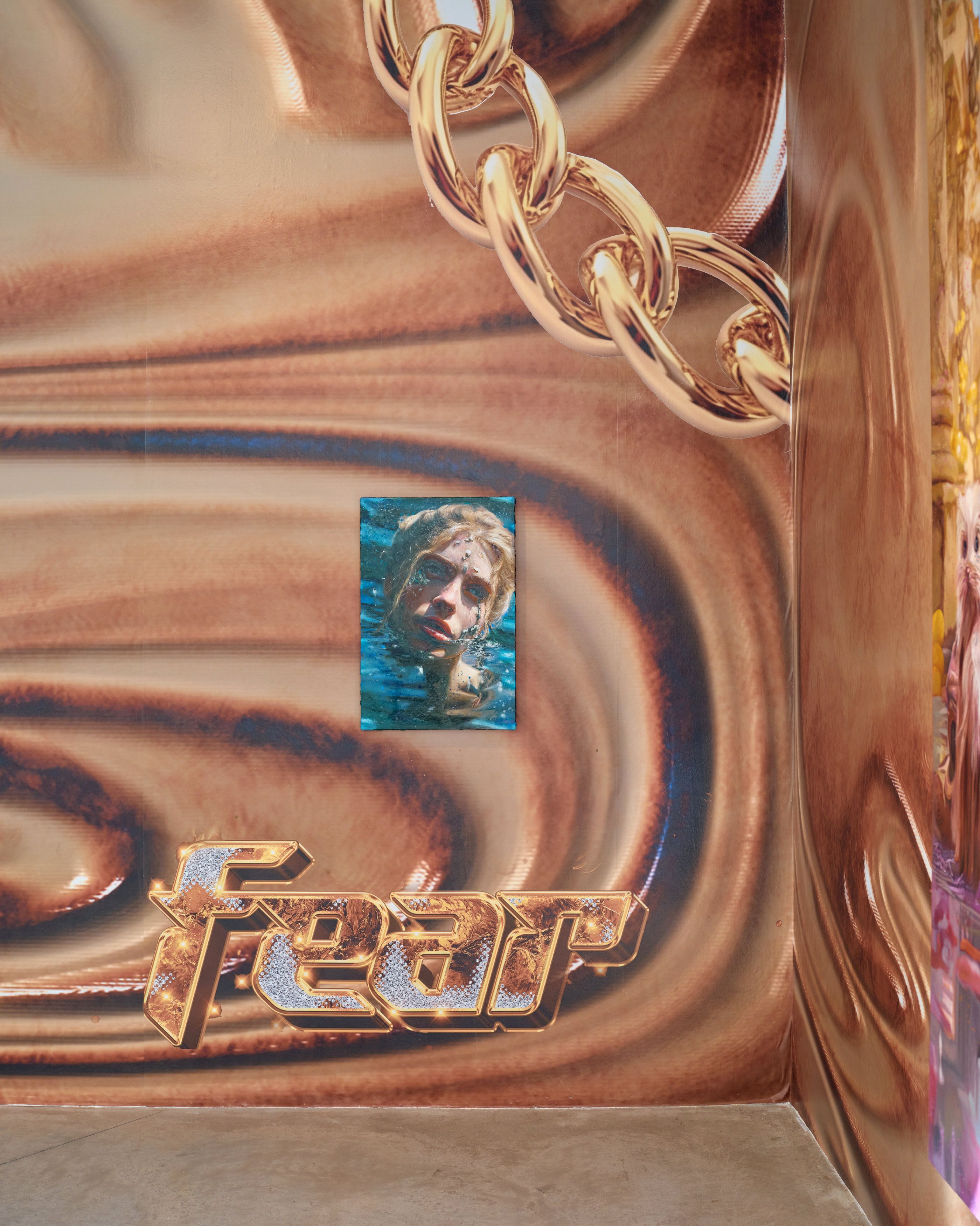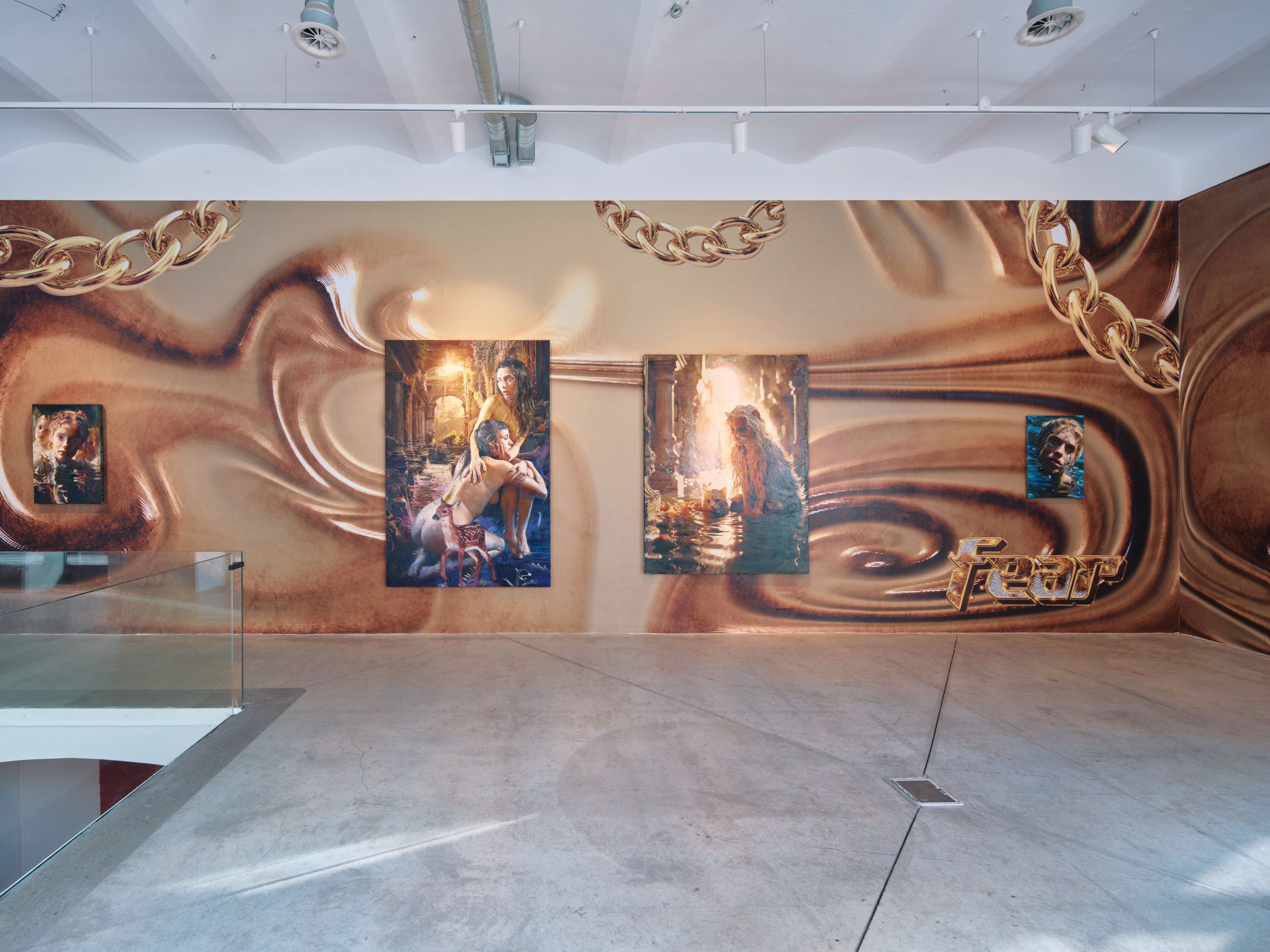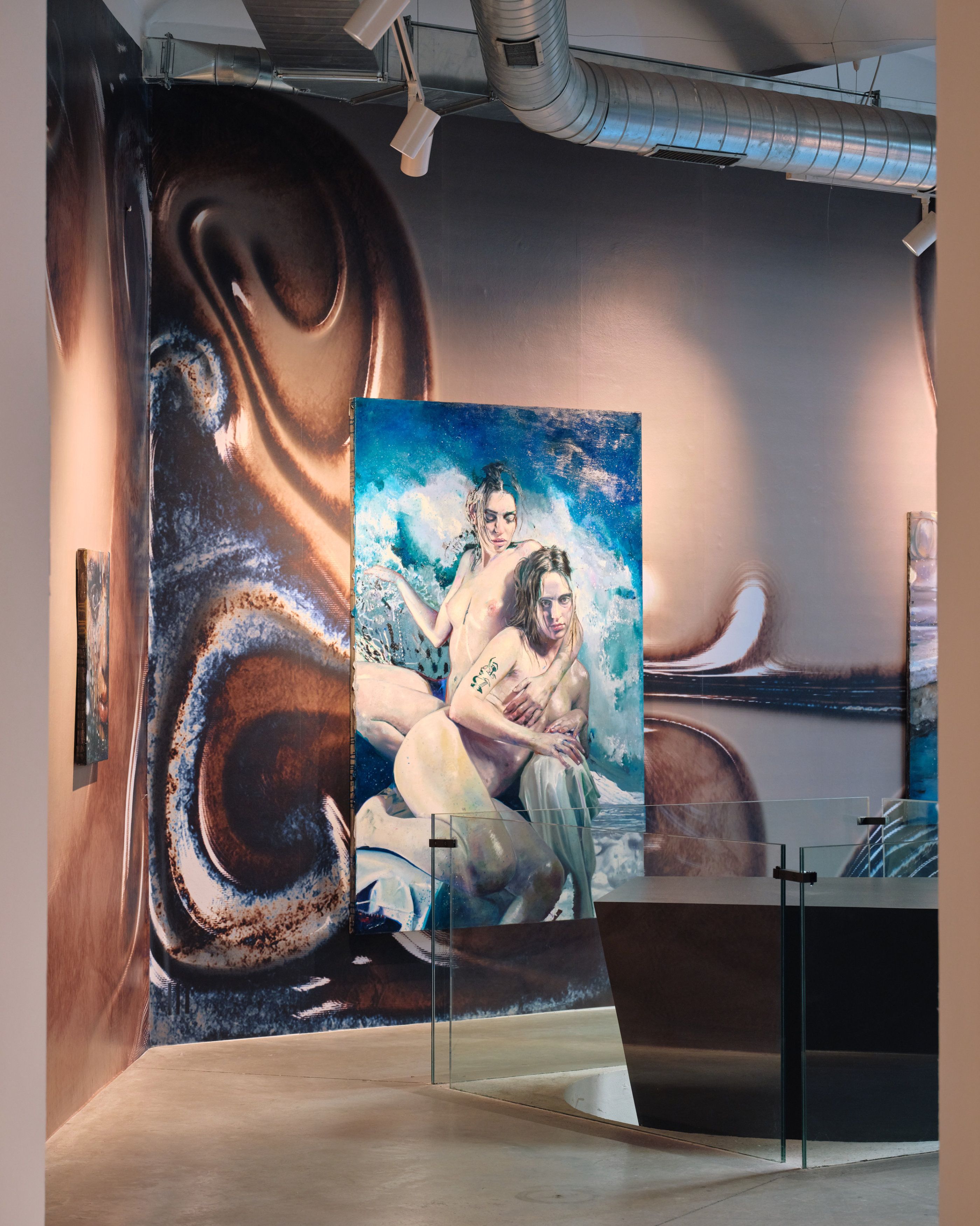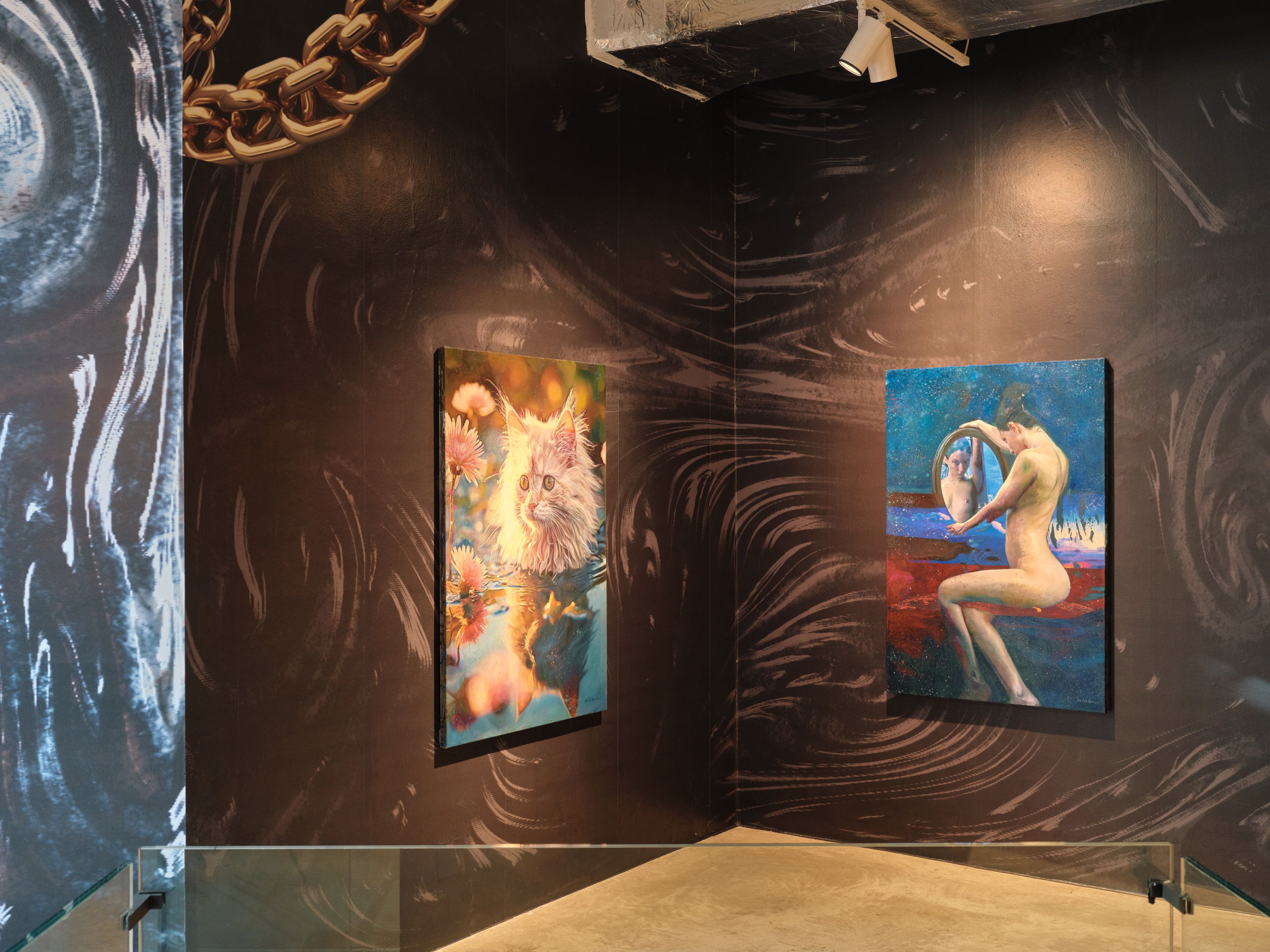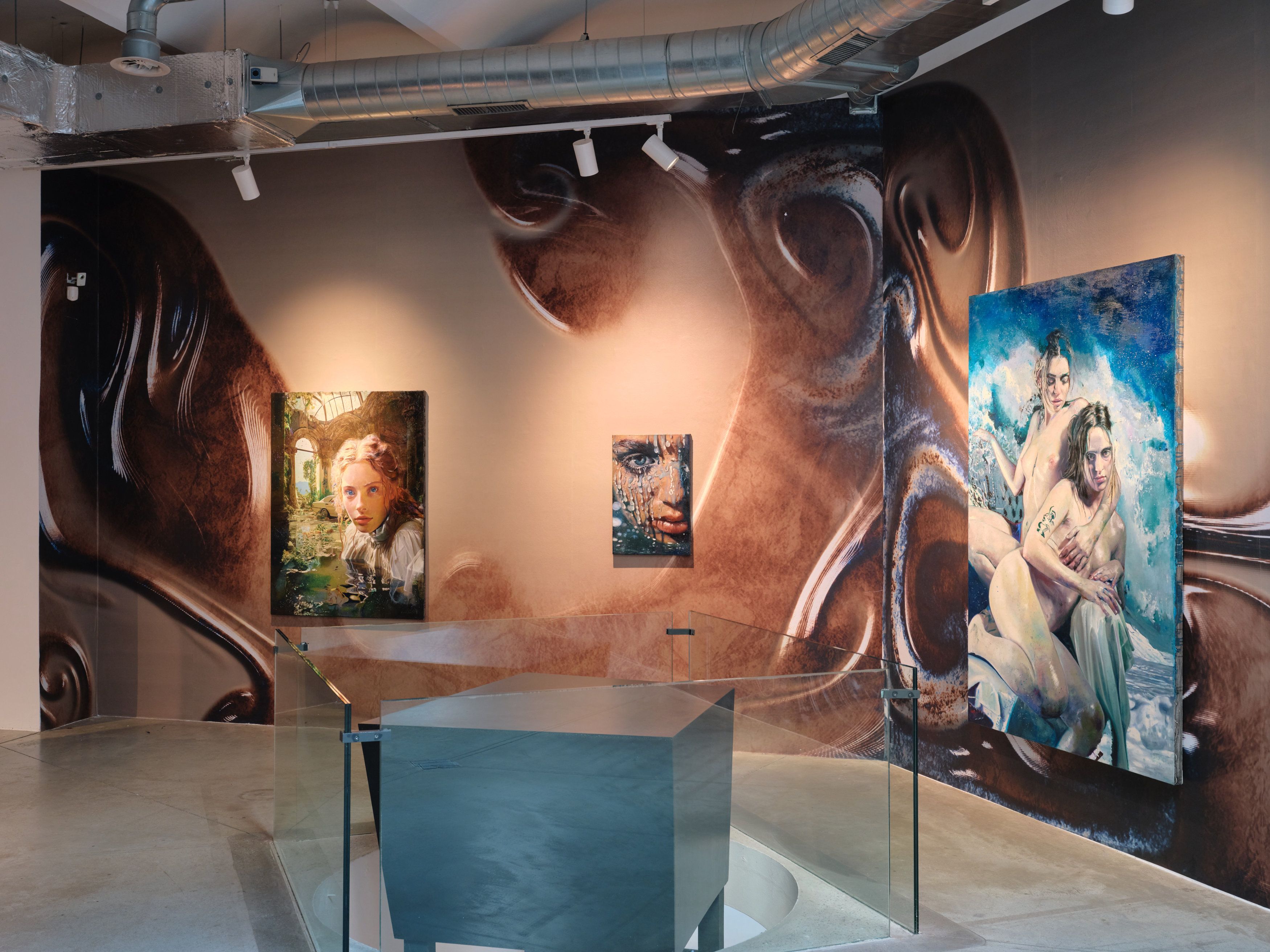Eder Martin
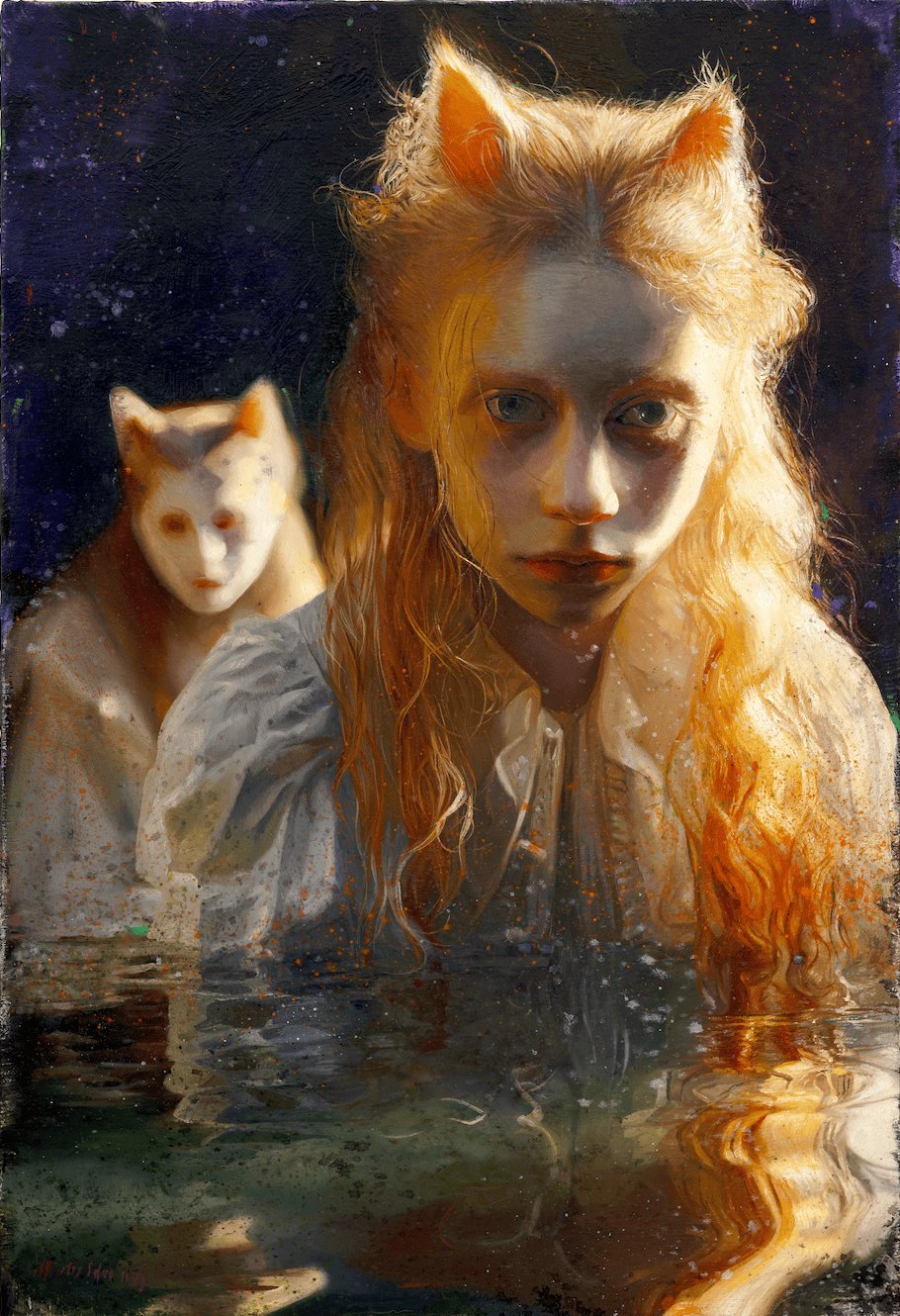
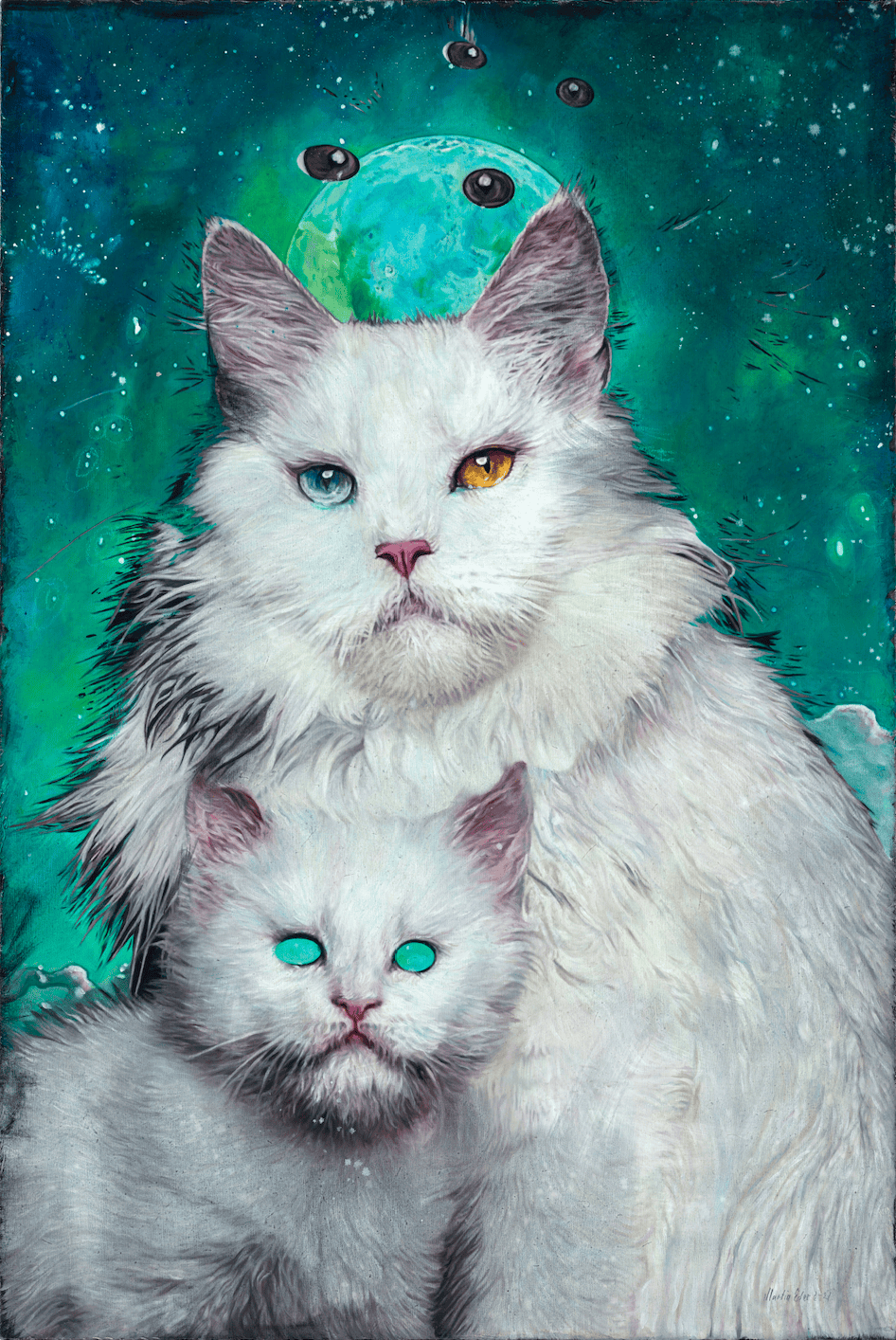
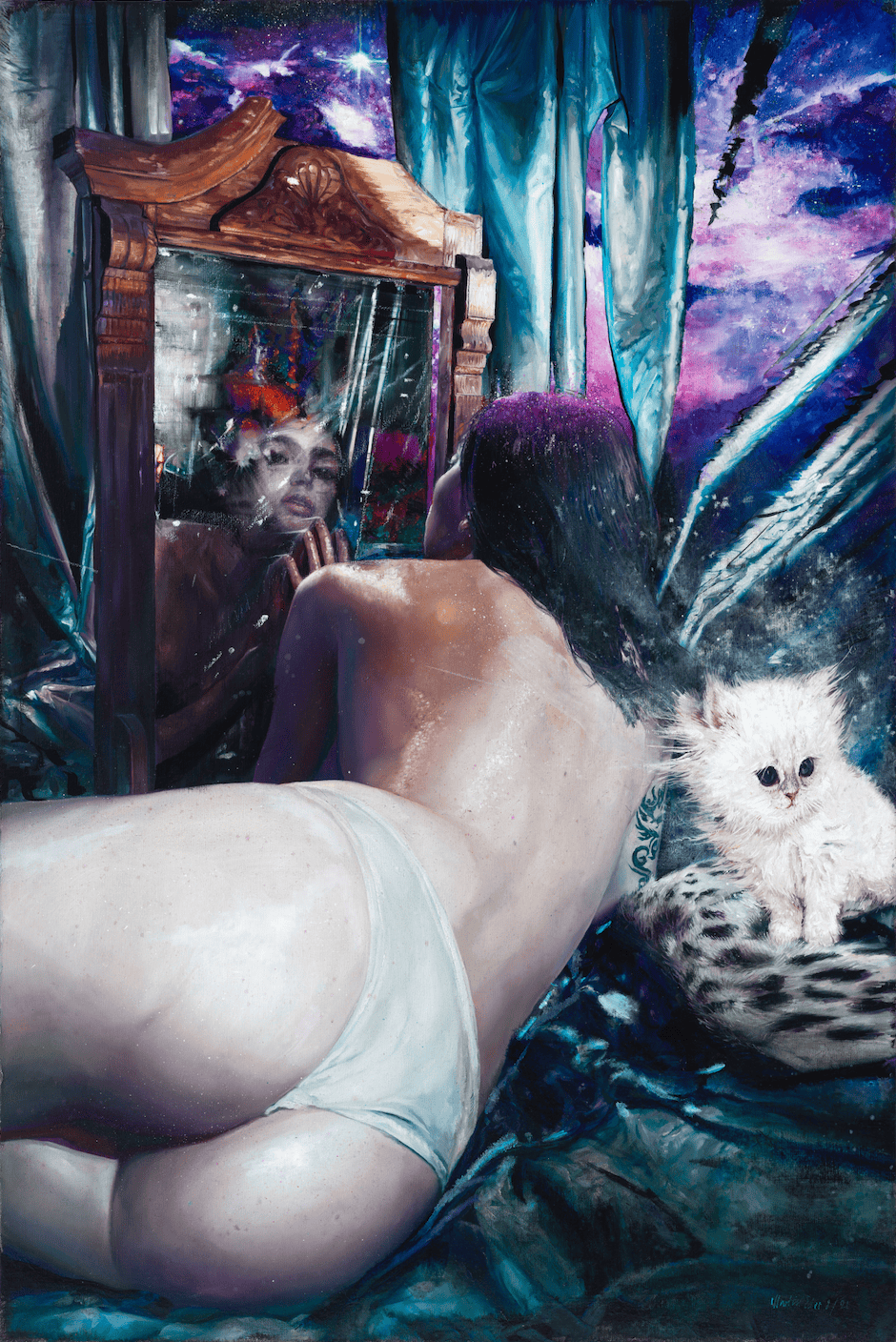
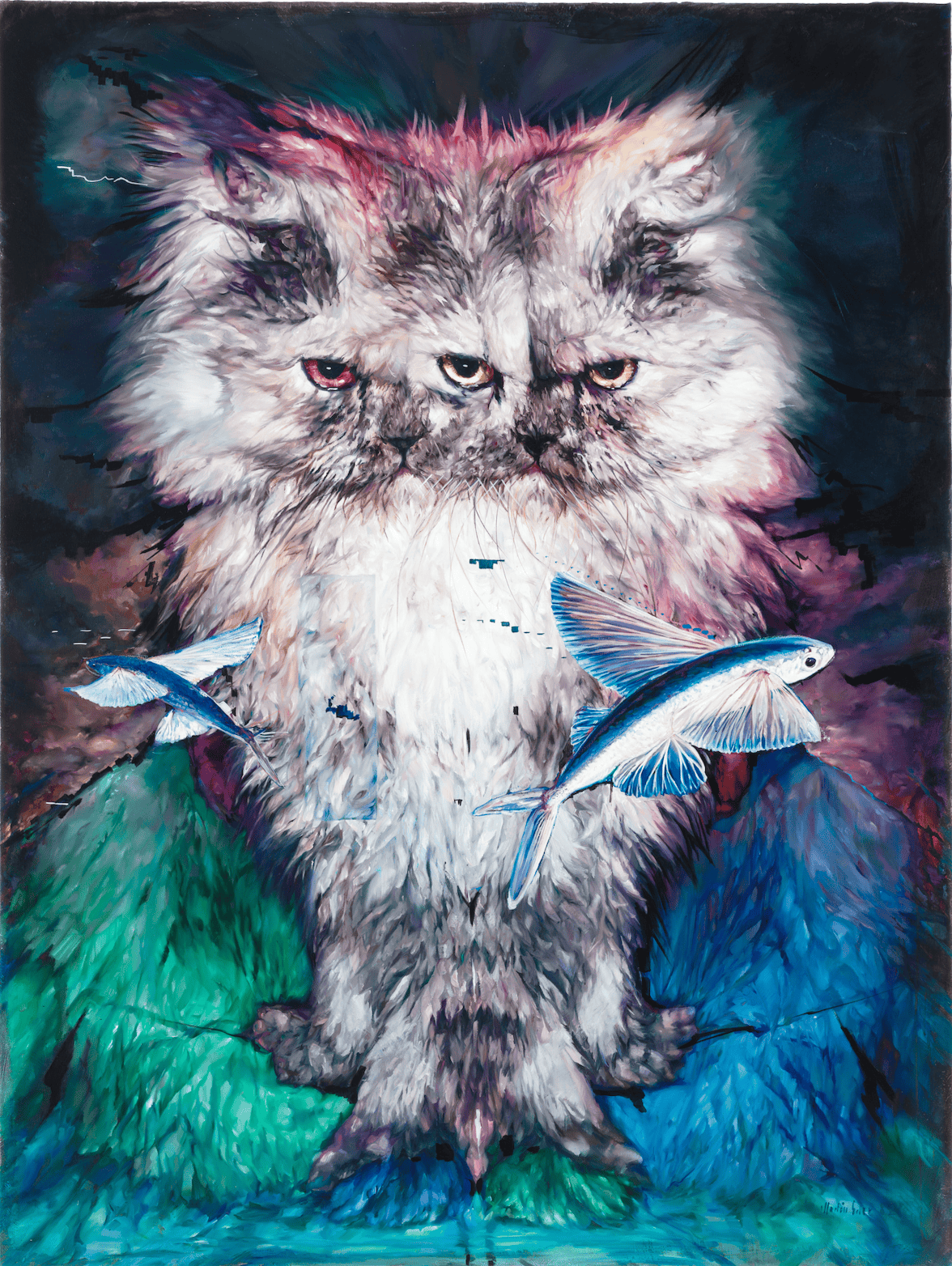



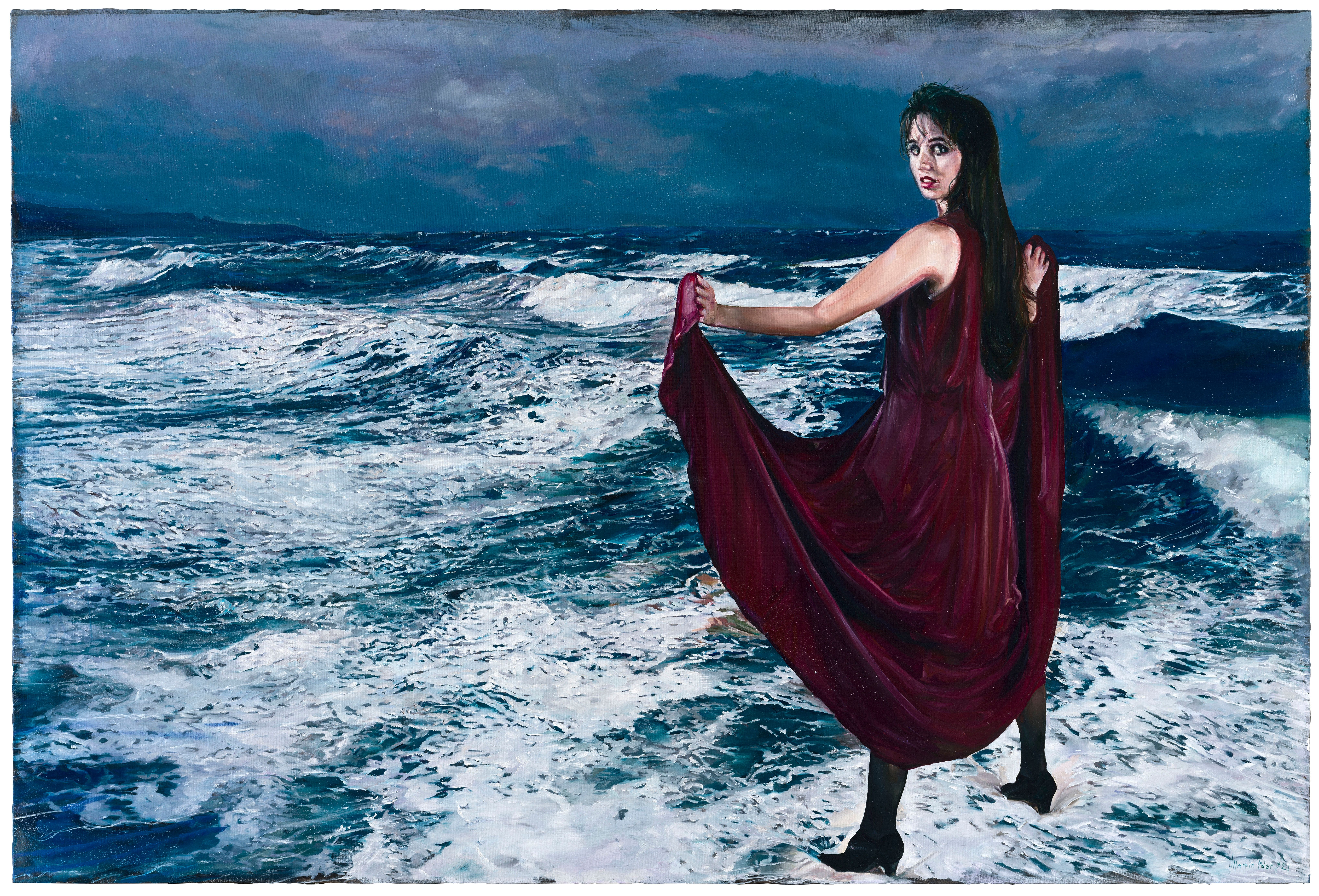
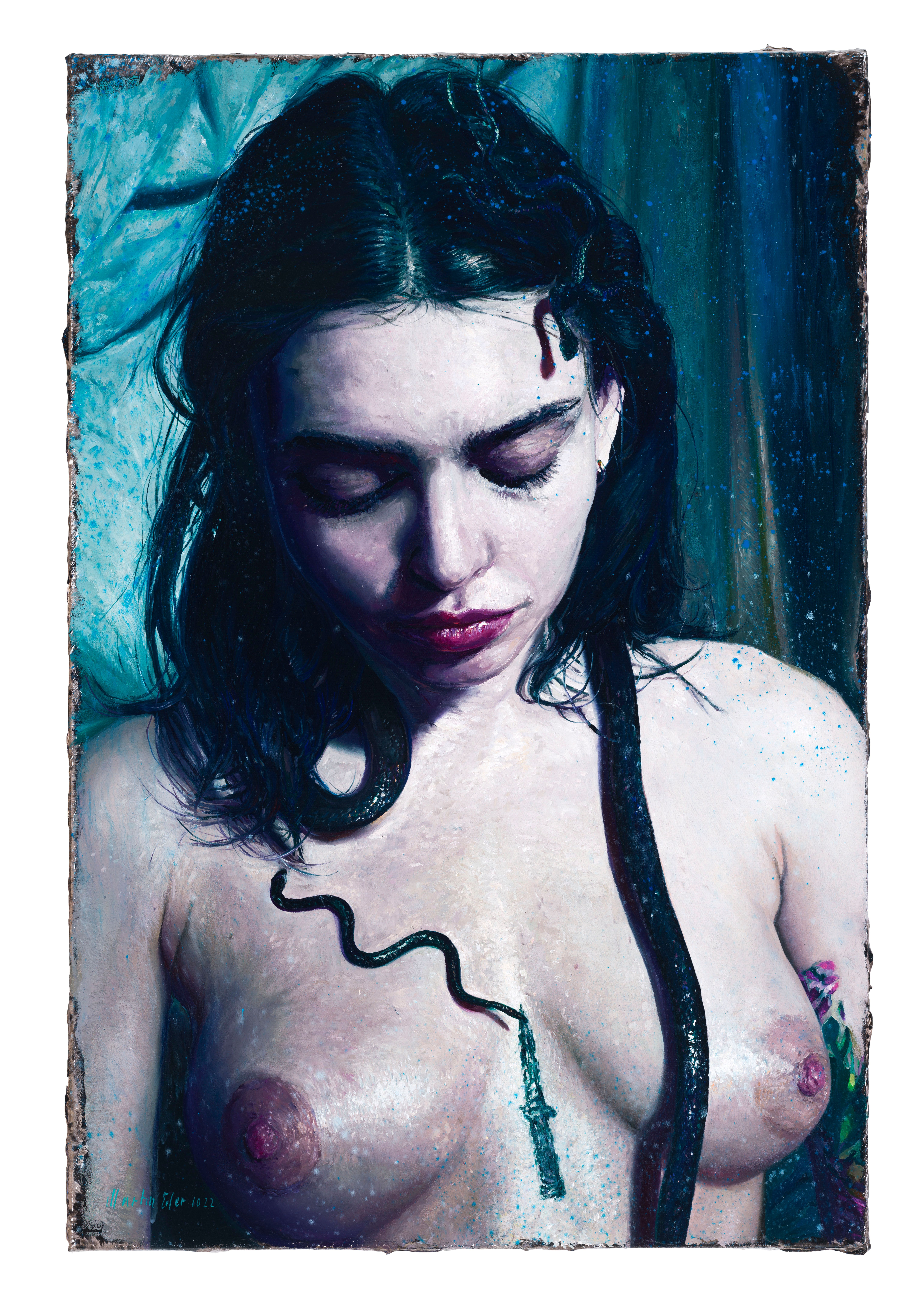
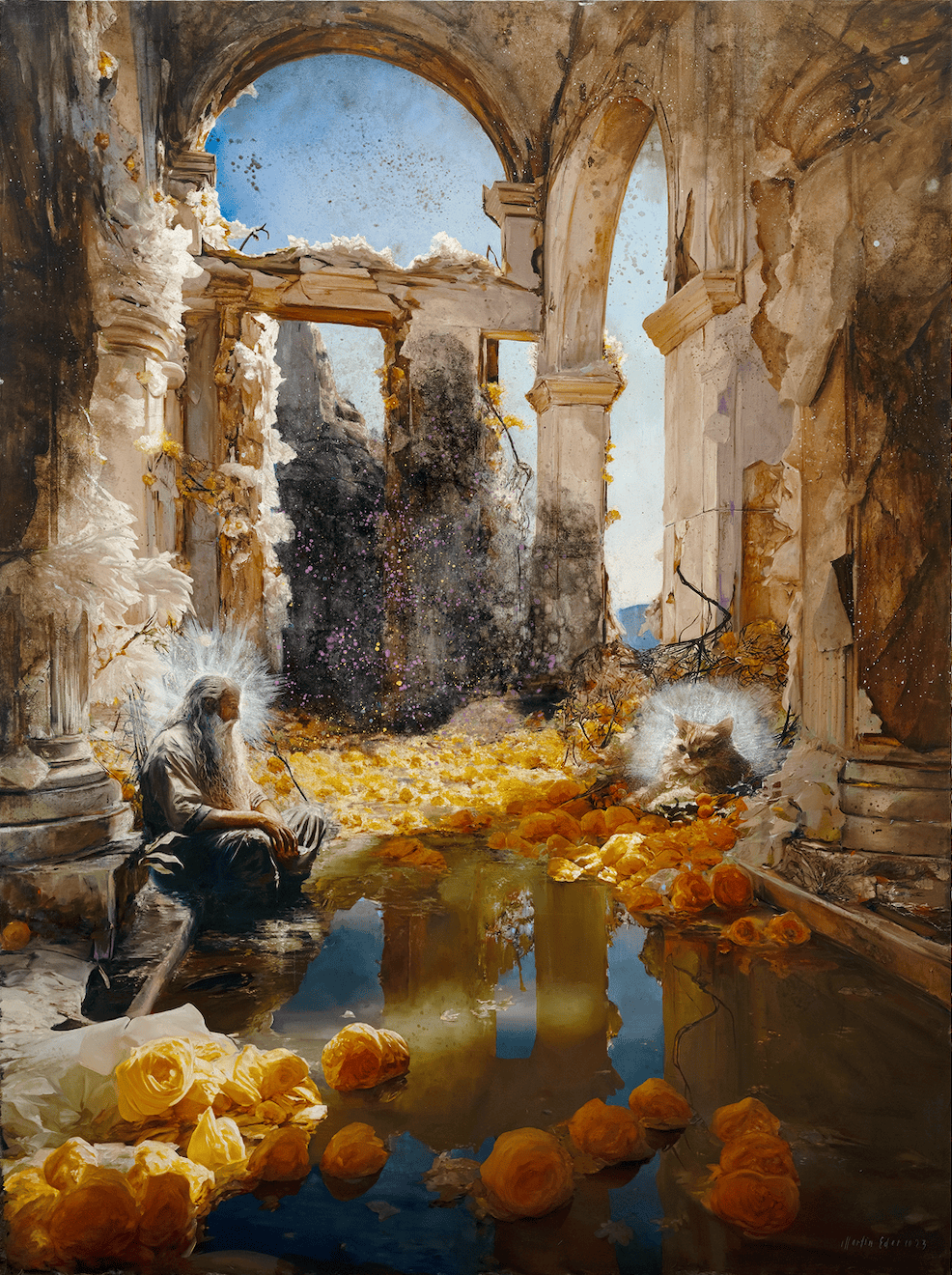
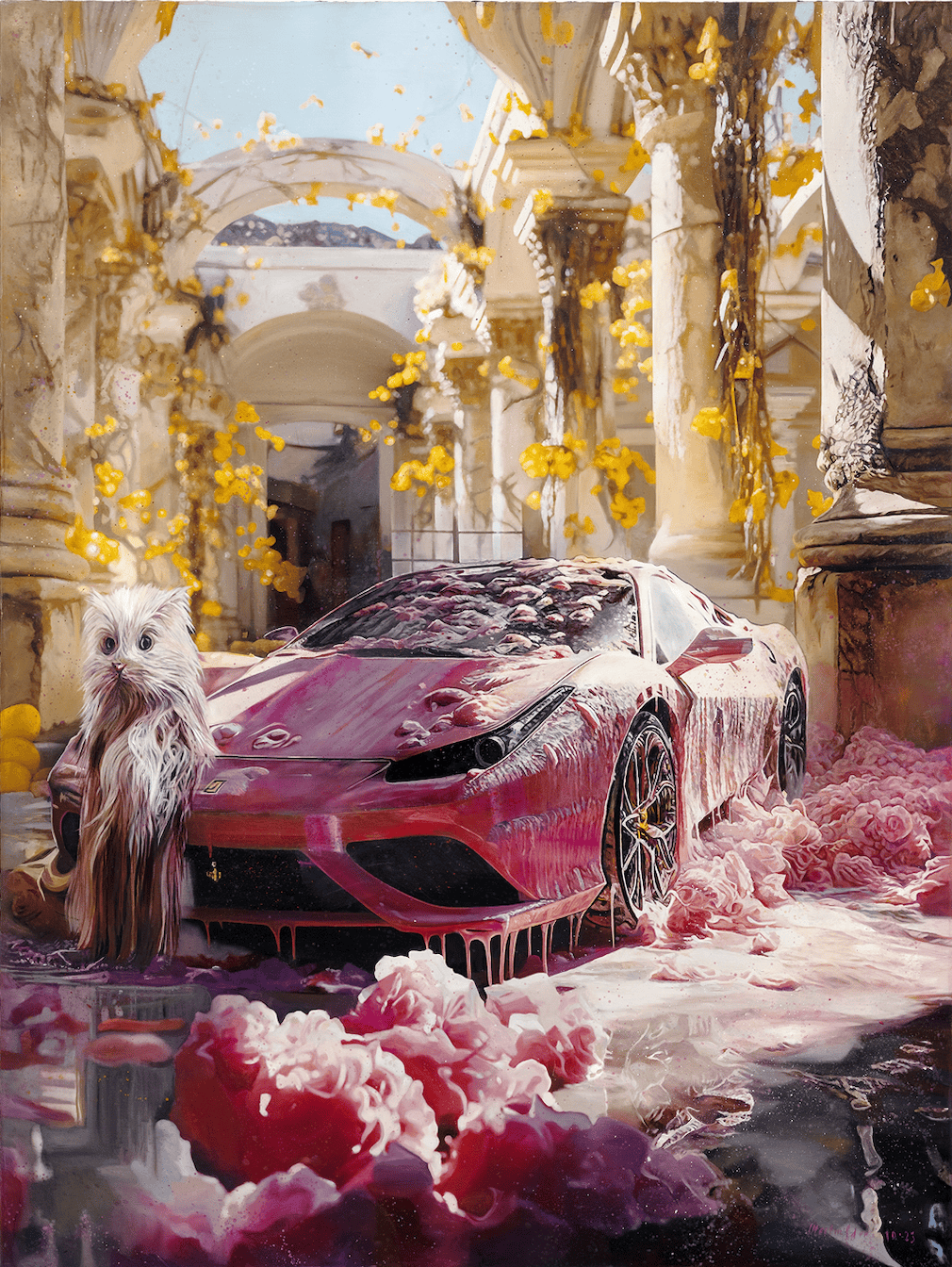

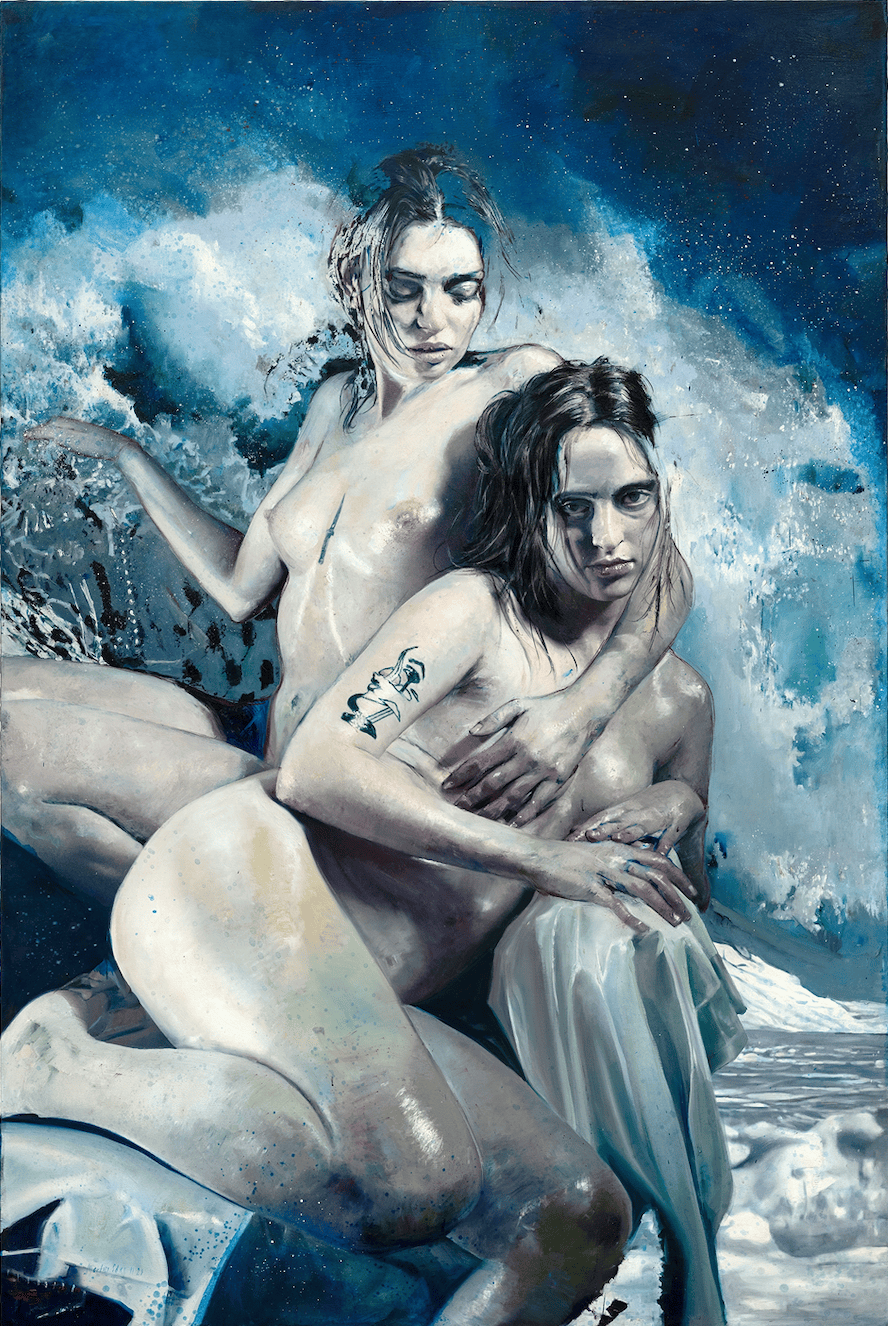
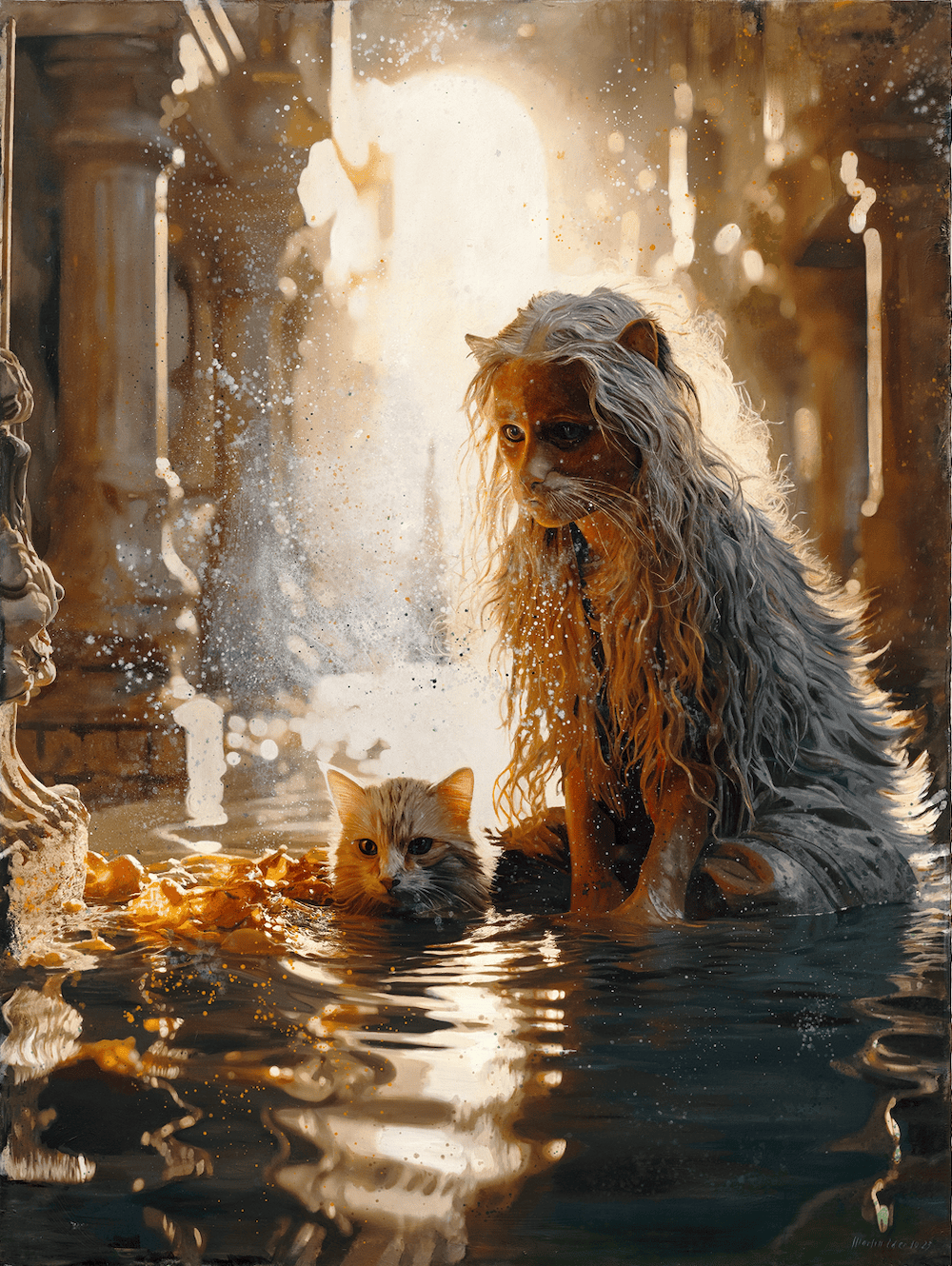



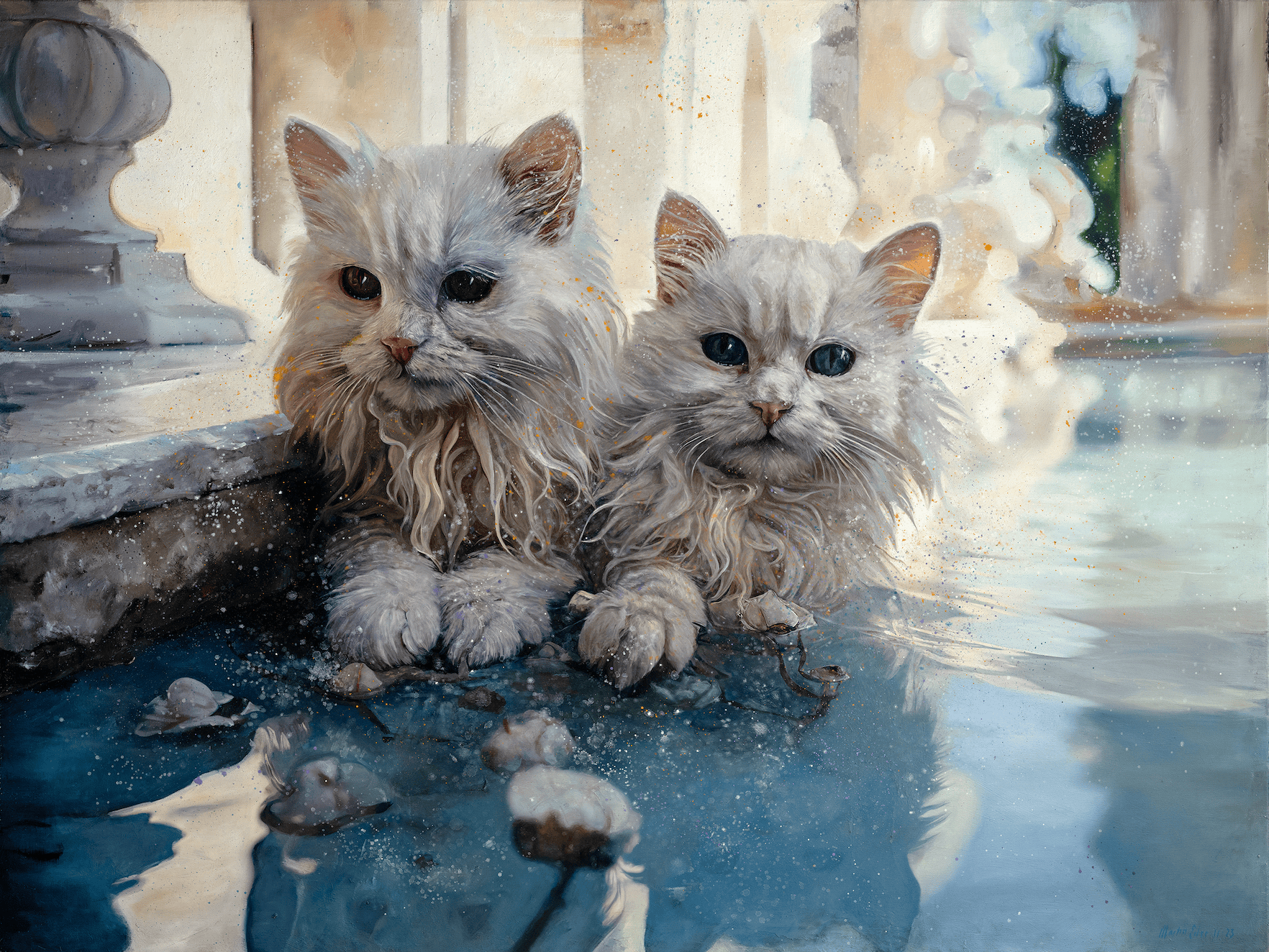

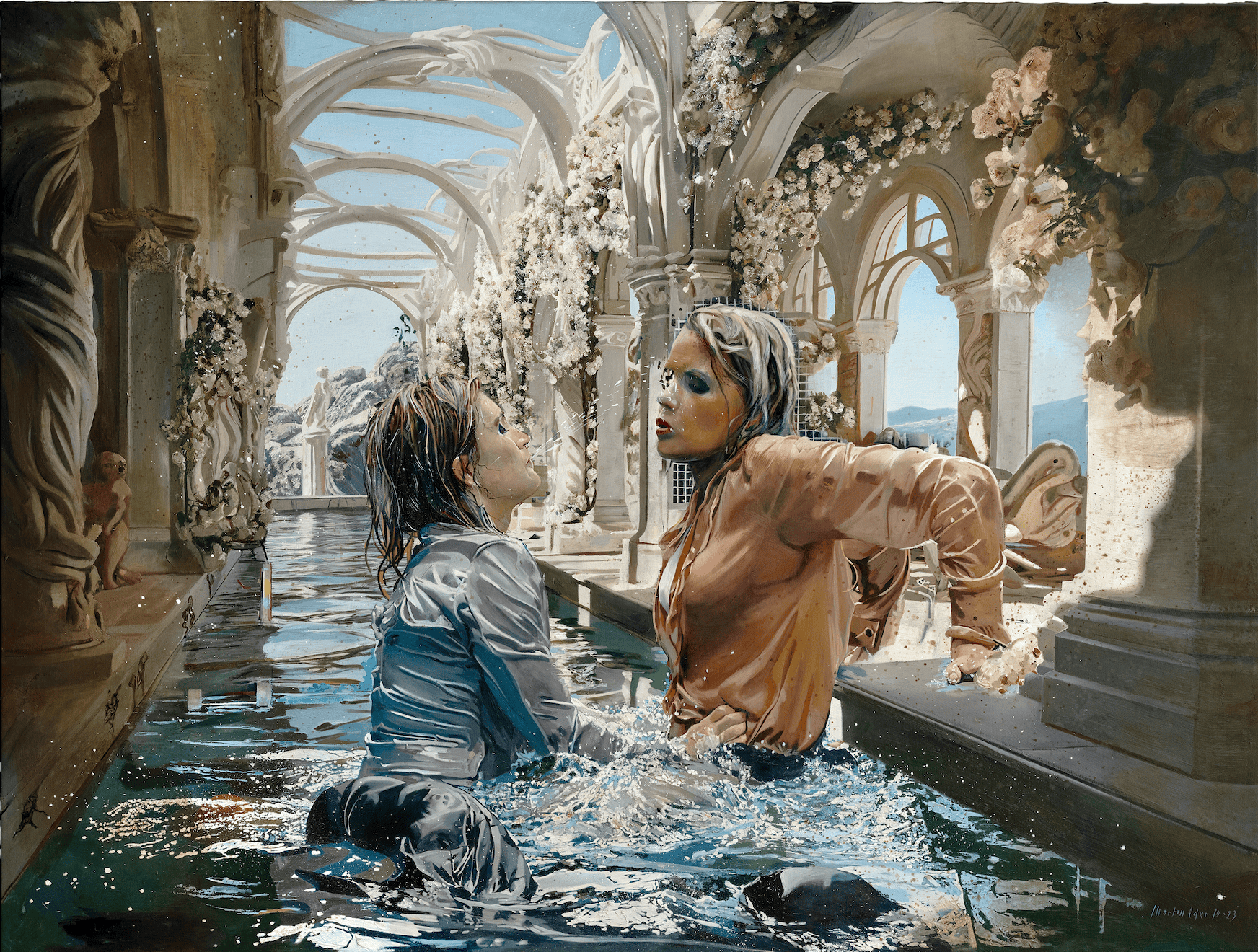

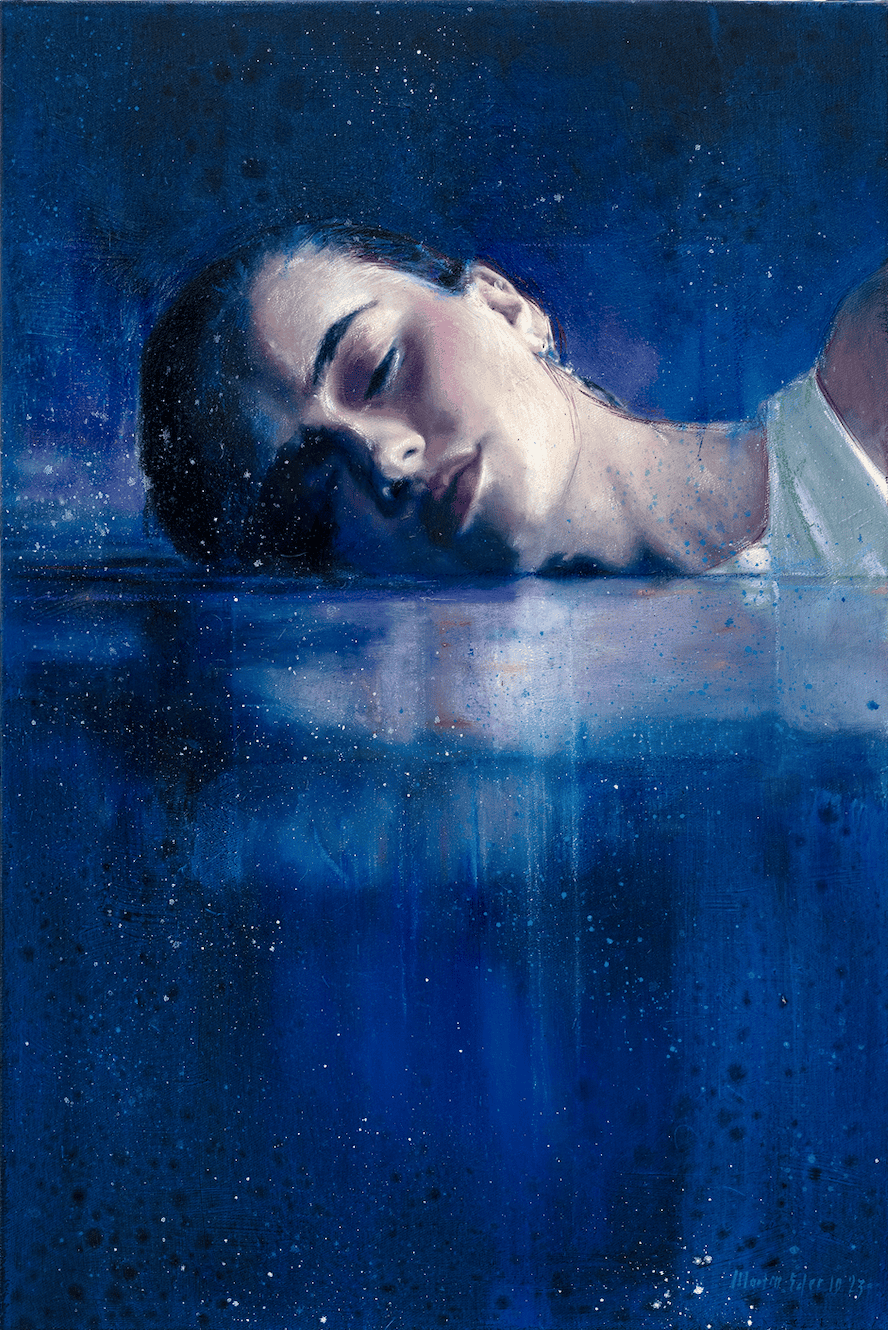
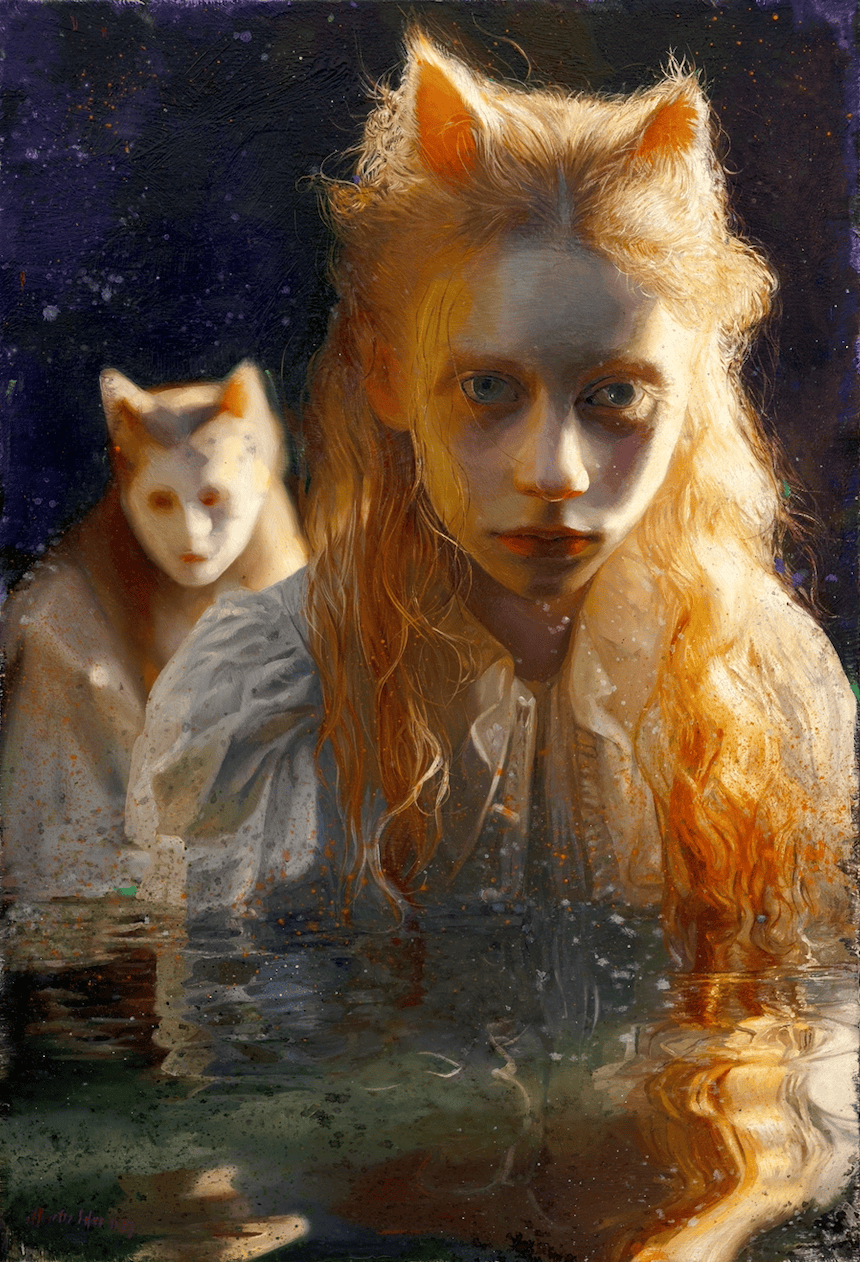


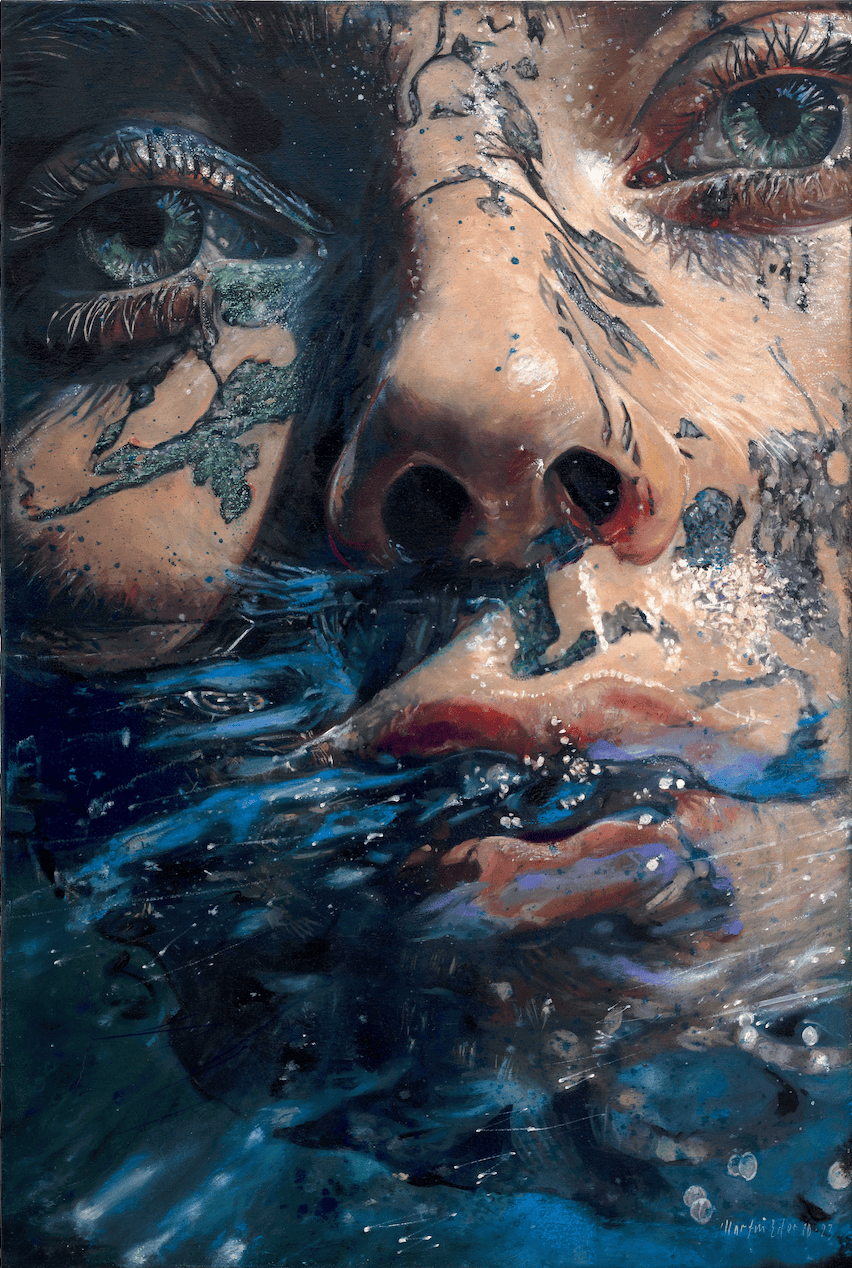
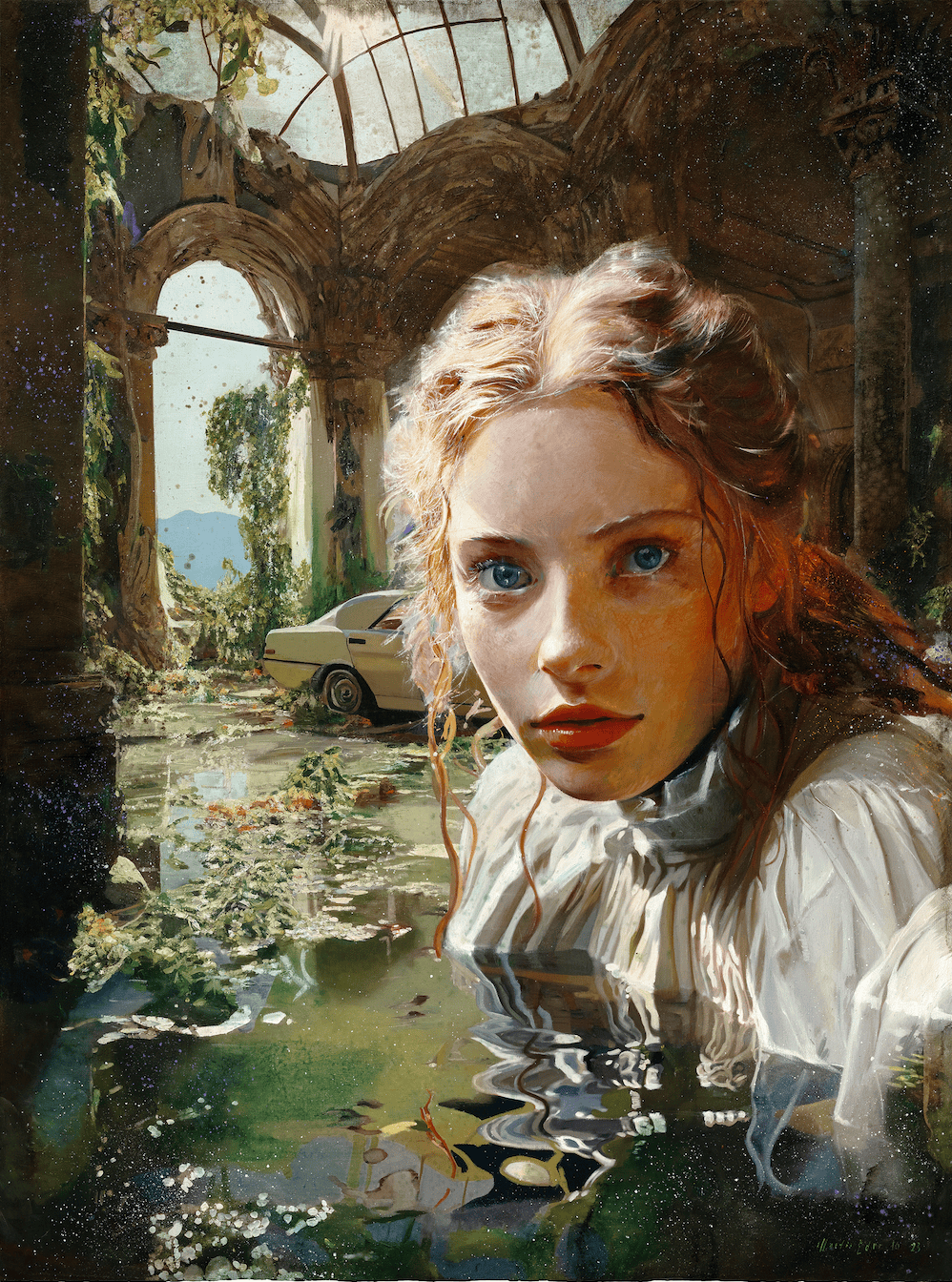
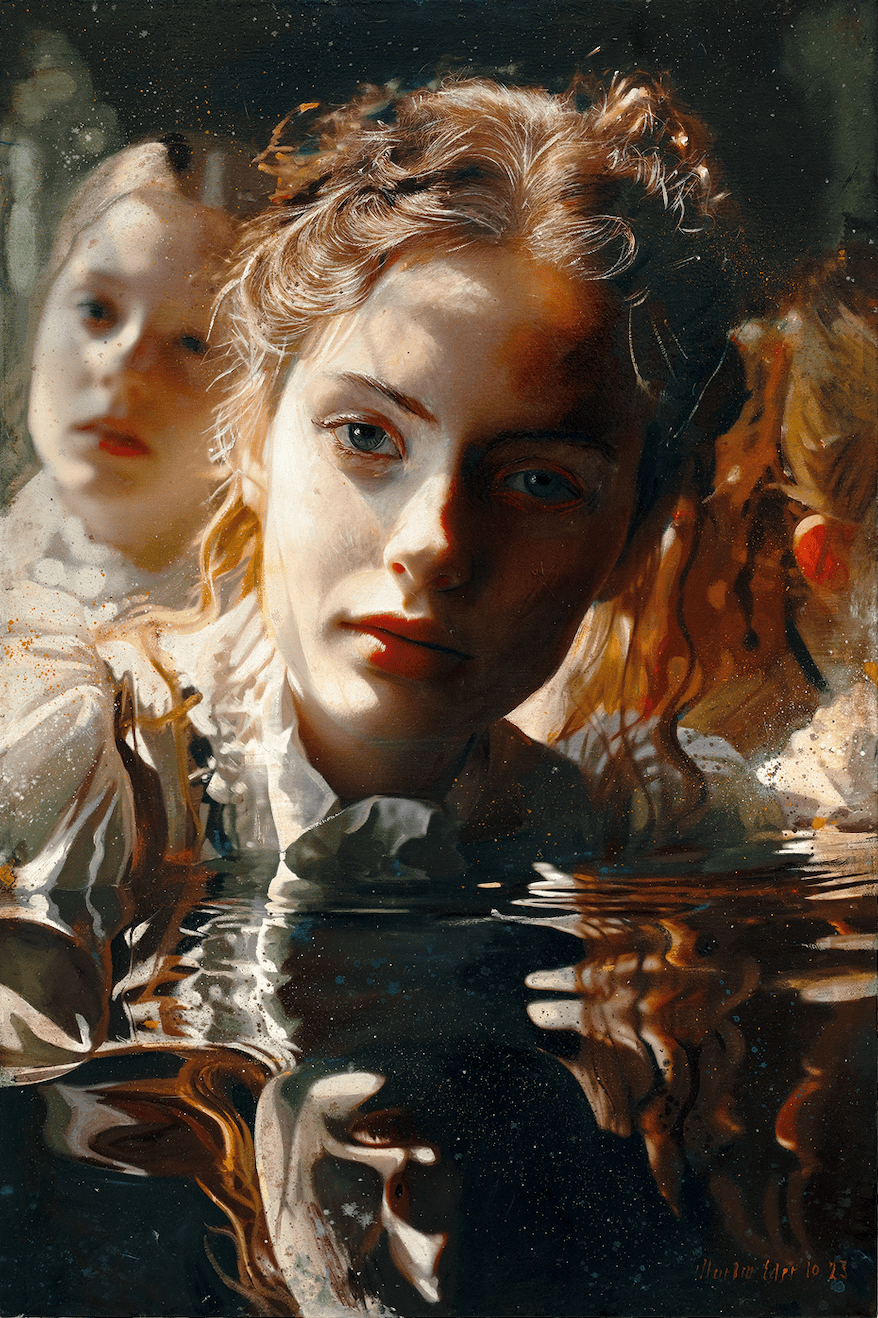
 CV
CVMartin Eder, one of the most widely recognized contemporary German painters, is also a sculptor, photographer, musician, performance artist and even a hypnotist. By integrating surrealist and post-modern, erotic motifs, Eder challenges established perceptions of beauty, thus undermining the globalized status quo of Anglo-Saxon pop culture. Eder gravitates towards the liminal: the intersection of piety and profanity, vulgarity and chastity, reality and fantasy. For Eder, postmodern psychedelic aesthetics are just as inspirational as religious hagiographies; surrealist motifs are just as evoking as pagan iconography; Albert Durer is as equally stirring as Hieronymus Bosch. A student of hypnosis and the occult, Eder mines the unconscious for the erotic and the kitsch, integrating realistic depictions of beauty and unreal brutality within a single painting. Eder continues to explore other modes of expression beyond painting as depicted by his hypnotic performance 'Mentale Physik und die Strahlen Luzifers' (2017) and the drone-doom, black metal band 'RUIN'. Eder's art has been sought by artists, private collectors, and institutions, most notably world-renowned artist Damien Hirst and the Museum of Modern Art in New York City.
The premises of DSC Gallery will once again feature an ethereal cycle of works by painter and mystic Martin Eder. In his exhibition entitled “The Fountain of Youth”, Eder’s hyperrealistic paintings will feature themes which have always fascinated him: from within the elixir of youth will emerge creatures, animals and phantasms with perfect skin or fur, untouched by time, entirely undisrupted and eternally perfect. We undergo spa and wellness treatments with the hope that we will get one step closer to immortality. Martin Eder views this approach through the lens of digital technologies which help generate fictional avatars. It is becoming increasingly impossible to distinguish between reality and AI-generated images. In the last thirty years Eder has focused on painting people’s pets, observing their owners addictions and sources of pleasure. His paintings are becoming so perfect as to be formally indistinguishable from AI-generated technologies: Eder’s brushstrokes are becoming more and more refined while he uses his colour palette to conjure up a pantheon of unreal gods. Medical signs and symbols have always evoked the idea of self care. This is why Martin Eder often depicts the caduceus, the symbol of the intertwined snakes. This is not a harbinger of catastrophic things to come. This is a reference to the ideas of renewal and rejuvenation and the courage to face one’s fears. Nymphs, mermaids, and electric sirens - all are featured on Eder’s large canvasses. His creatures hide in beautiful temples, and the arid atmosphere of their ruins is reminiscent of extinct civilisations, waiting for their creator’s mercy and deliverance. We are dazed by the water of life, or aqua vitae in Latin. In the 15th century, the water of life was modified into an alcoholic beverage called Aquavit. The public thought it had healing properties and it was served during celebrations and rituals. Eder’s canvasses feature an ethereal, fairy-tale-like atmosphere, and its figures are submerged in a similar liquid, as if drowned in aquatint, which is seemingly keeping them alive. However, it is uncertain whether the liquid will be enough to save them. The embalmed, demonic creatures look disturbed and afraid. They fear the loss of their beauty, or what is worse - they fear somebody else will become even more beautiful than them. This is Eder’s apt reaction to the modern obsession with artificial beauty and perfection, fuelled by social networking sites. Eder suggests that this pursuit of unrealistic dreams robs people of their individuality. Illusion as a concept has always been influential in art: without it, the paintings of women with their beauty artificially enhanced would never have been created.
